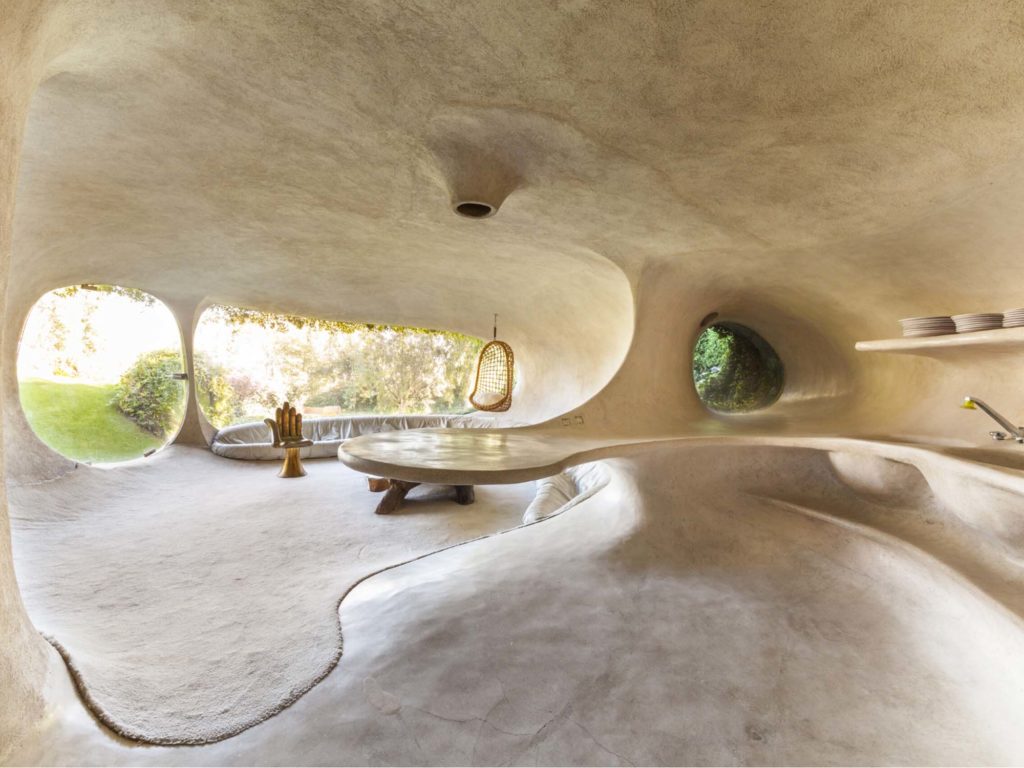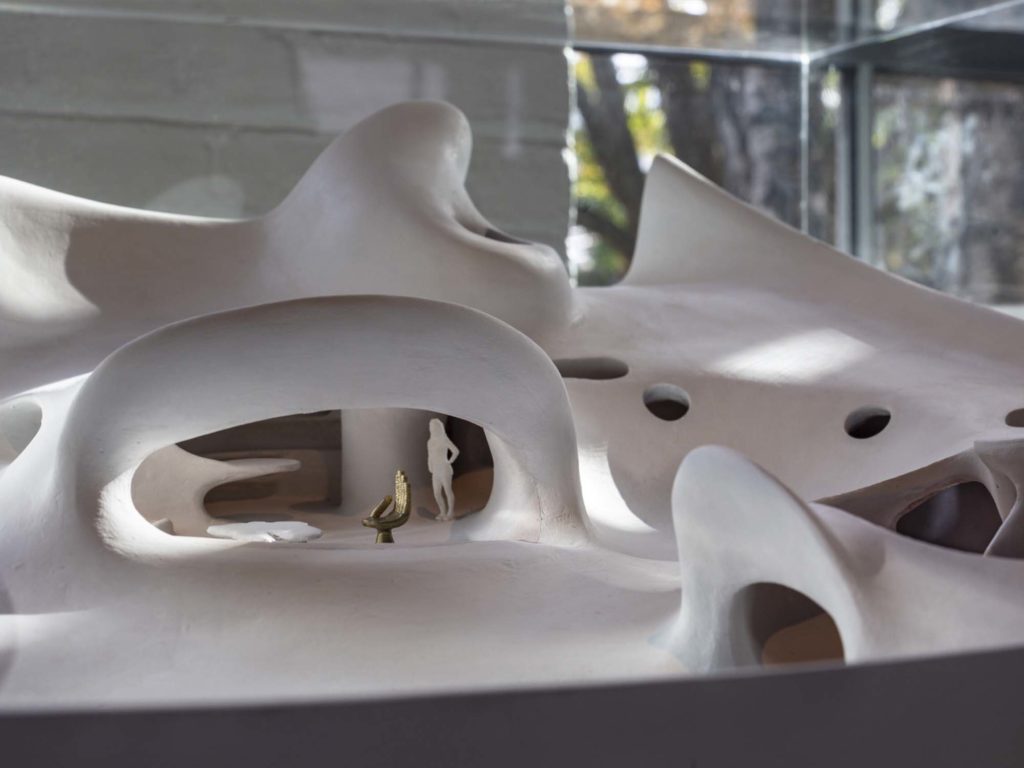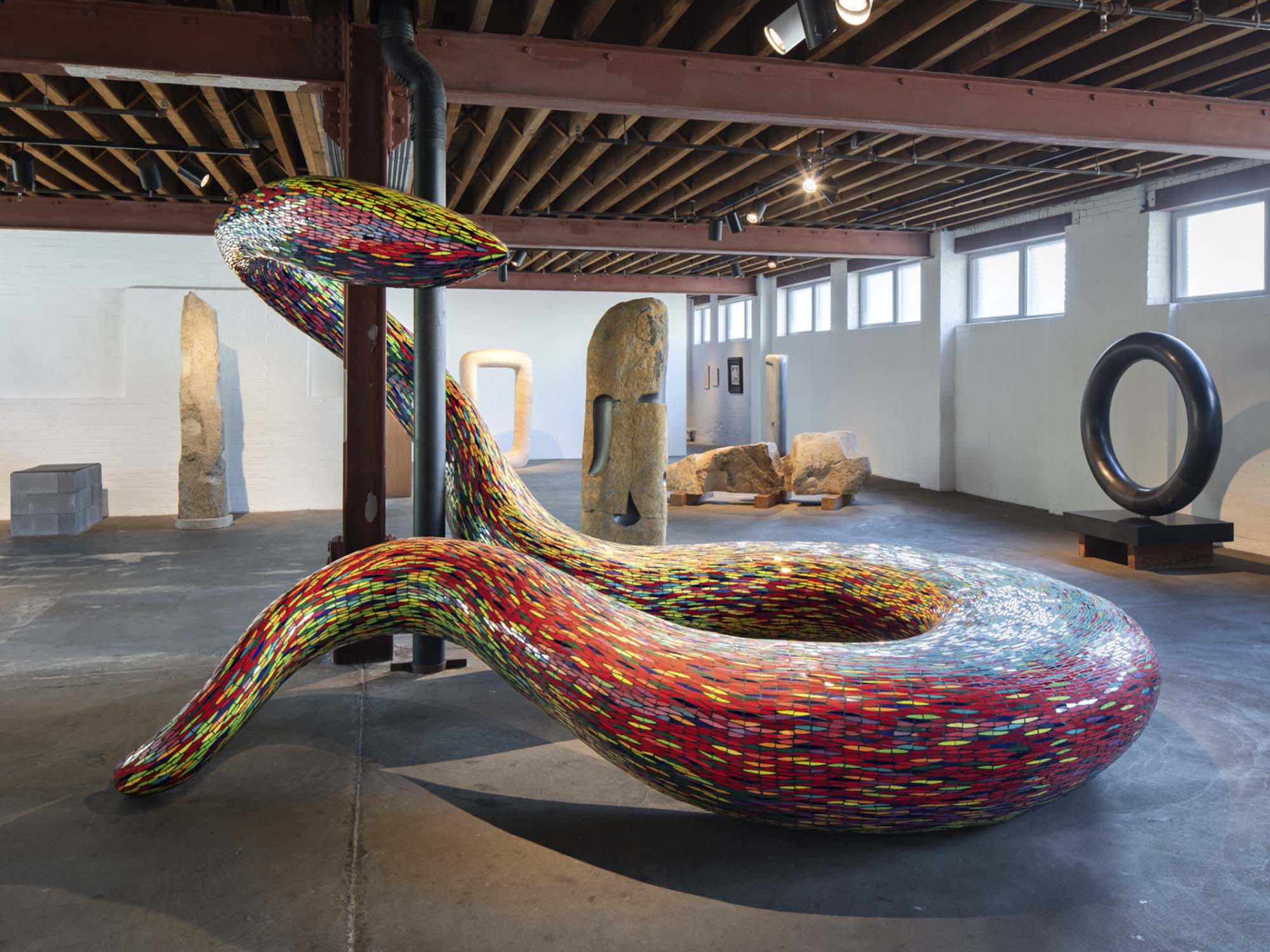The Isamu Noguchi Foundation and Garden Museum – founded in 1985 by category-defying artist Isamu Noguchi – presents In Praise of Caves: Organic Architecture Projects from Mexico by Carlos Lazo, Mathias Goeritz, Juan O’Gorman, and Javier Senosiain, an exhibition spanning multiple galleries on The Noguchi Museum’s first floor.
The exhibition combines a selection of projects by Carlos Lazo, Mathias Goeritz, Juan O’Gorman, and Javier Senosiain that explore the adaptation of natural structures to modern living, the practical and environmental benefits of moving underground, and how humanity might reconnect with the essential happiness of living in concert with nature. Under the broad rubric of organic architecture, these projects and site-specific installations reflect a coherent alternative paradigm for approaching the relationship between the human-made and natural environments that was developed in the middle of the twentieth century. As the climate crisis accelerates, along with other terrifying signs that we have fundamentally and perhaps irreparably broken our relationship with nature, the visions of these artist-architects have never been more relevant.
Together with the exhibition Noguchi Subscapes, these projects will temporarily turn The Noguchi Museum into a subterranean environment as a metaphor for contemplating and perhaps reassessing our place in the world.
The title In Praise of Caves is inspired by a chapter of that name in Bernard Rudofsky’s The Prodigious Builders: Notes Towards a Natural History of Architecture (1977), a follow-up to his Architecture without Architects (1964). There is nothing primitive or backwards about living in caves, Rudofsky argues, as he introduces modern readers to examples of ancient and contemporary cave dwelling all over the world. The main thrust of his essay is that “the only way out of the human rabbit warren is, quite simply, down the rabbit hole.”1 We will, he points out, eventually have to move back underground, once we have filled and despoiled the surface of our Earth.
It begins in the Museum’s open air pavilion that Isamu Noguchi (1904–1988) designed for his totemic basalt sculptures. An exhibition copy of El Serpiente de El Eco (The Serpent for El Eco; 1953) by Mathias Goeritz (1915–1990), a nearly 30-foot-long, 16-foot-tall snake that Goeritz designed for his museum El Eco (1952–53) in downtown Mexico City, will be installed in Noguchi’s indoor-outdoor rock garden. In Goeritz’s work the snake represents a path through the Earth and an avatar to be followed into a more ecologically sound future. As Goeritz remarked of the Escuela de Altamira, a movement he participated in forming in Spain just before his move to Mexico, “The painters of the School of Paris were the latest of yesterday. We of the Escuela of Altamira, the new prehistorics, are attempting to be the first of tomorrow.”2 The large serpent will be complemented by a nest of snakes and a selection of other cave life in an adjoining gallery. A third space, acting as a cave mouth, will feature celestially-oriented works.
In the center of the main gallery of the Museum’s first floor, Javier Senosiain (b. 1948) will install a large mosaic-covered serpent. Senosiain, leader of the second generation of Mexican organic architects, is also an important scholar of bio-architecture and the principal champion of his predecessors’ legacy. Also on view is a selection of models for realized and unrealized projects, including the first home he built for himself, Casa Orgánica (1984–85, Organic House), later expanded by the addition of a second level, El Tiburón (1990, The Shark); and El Nido de Quetzalcóatl (1998–2007, The Nest of Quetzalcóatl), his vast residential park in Mexico City.
Another gallery is devoted to architect Carlos Lazo’s (1914–1955) modern cave home La Casa-Cueva de la Era Atómica (1948) in Lomas de Chapultepec, Mexico City, presented through archival photographs and a new model fabricated by Javier Senosiain’s firm Arquitectura Orgánica. The model will be accompanied by a display of images of Lazo’s other efforts to take modern living back to the future in his Civilized Cave project, which was to have included 110 homes fashioned from natural caves in a canyon wall. Working as an architect and urban planner throughout Mexico, but in particular in Mexico City, an exploding metropolis in an uncertain time, Lazo recognized the need to adapt to the existing topography and take advantage of every natural resource.
Juan O’Gorman (1905–1982) is well known for his allegorical apocalyptic paintings that deal with humanity’s troubled relationship with the Earth. A selection of these, focusing on exploitation of the environment, are included. A new model of the home O’Gorman made for his family, which was built around a lava cave in the Pedregal neighborhood of Mexico City between 1948–54, will be the main focus of this installation, along with plans for and images of the house. It is in Casa O’Gorman, which the artist-architect famously likened to living in a laboratory, he and his wife Helen (a superb amateur botanist and botanical illustrator) attempted to study subterranean dwelling first hand.


Header image: Javier senosiain Aguilar and Enrique Cabrera Espinosa de los Monteros, “La Coata”, 2022. Photo: Nicholas Knight. ©INGFM / ARS










